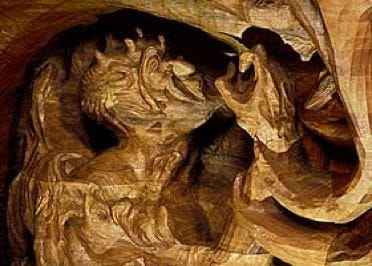Blog
Shahnameh: Initial Impressions
Tags: Books, Literature, Shahnameh, Iran, History
I’ve almost completed my reading goal for the third day of Shahnameh (which I’m balancing with daily readings of War and Peace, following Brian E. Denton’s daily devotional and mediation series), and I have some initial thoughts. The most immediate impression is also the most superficial, and that’s Dick Davis’s treatment of the subject. In making my selection for an edition to read, I admit I wasn’t looking closely. I might not have selected the Penguin Classics edition had I known it was almost entirely paraphrased prose. Still, there aren’t many English editions to choose from, and I don’t see any in my cursory scan through Amazon that also attempt to preserve the poetic structure in any way. I guess I had hoped for a slightly different approach from Davis’s delivery, which nonetheless is regarded as definitive in terms of English translations of Shahnameh. Since I am incapable of reading Persian or Farsi (for which many editions exist), Davis and his blend of prose and poetry must suffice.
Digging into the material itself, delivery method aside, I was quickly confronted with a tapestry of narratives pinned on a body of assumed knowledge, knowledge I don’t exactly possess. I’m not sure Davis bears much responsibility for this, except in his curious omission of footnotes and endnotes. I skipped the introduction, which was perhaps unwise, seeking instead to sink or swim in the material according to my own abilities. On second thought, though, I do blame Davis, who made the decision to begin his narrative with the ascendance of Kayumars (also transliterated Kaiumers and Gaiumart), the first shah of the world, skipping entirely Ferdowsi’s exordium and the explication of the world’s cosmology. Some of this appears to merit mention in Davis’s introduction, but at present I am unable to say precisely how much.
Perhaps the cosmology isn’t that important. I’m open to others’ viewpoints on this. But consider for a moment the following, taken from the English translation available on the Zoroastrian Heritage site, which does consider this material important (translation by Warner & Warner, about whom more below):
The first thing needful for thee is to know
The sum of primal elements which He,
Who maketh all things, made from naught to show
The greatness of His own supremacy.
Those elements are fourfold; at their birth
No time elapsed and labour had no share;
Fire shone above, and in the midst were air
And water; underneath was dusky earth.
Fire was the first its virtue to unfold;
About it moisture ceased and dryness came;
Then fire where’er it failed made way for cold,
And moisture followed cold.
Do we simply assume that this view of the world’s creation was shared among ancient peoples, in Persia and elsewhere? I suspect evidence would contradict such an assertion. Or do we assume that modern sensibilities (noting that Davis’s translation appears to have been published in 1997) would reject a “four elements” cosmology? Whatever his reasons, Davis has extracted only the pre-Islamic components of the text for presentation, despite the text having only been set down to paper in post-Islamic Iran.
If you are curious and want a fuller rendition of the work, Arthur and Edmond Warner penned a nine volume translation in English that includes the entire exordium and cosmology. The Zoroastrian Heritage site includes selections from Warner & Warner, but their complete text is online at the Packard Humanities Institute, as well as the Internet Archive (link is to Vol. 1). I will be relying on these as supplemental reading for the Penguin Classics edition, in part to try to capture the essence I described above in my excoriation of the idea of rendering an epic poem into prose.
 Detail of “The Representative of Humanity” by Rudolf Steiner and Edith Maryon, 1922. Public Domain.
Detail of “The Representative of Humanity” by Rudolf Steiner and Edith Maryon, 1922. Public Domain.
In reading through the omitted portions, however, there are more assumed details that are not explained simply by reading the exordium and cosmology. Who is Ahriman, and from where did the Div originate? Why do they prey on Man? For these, we need some background in Zoroastrian belief, but I am not yet up to the task on this matter, as the faith itself is wholly unfamiliar to me, its relation to Second Temple Judaism, Christianity, and Islam notwithstanding. Ferdowsi’s audience no doubt possessed the relevant background knowledge to make sense of these cosmic forces, which seems to have humanity occupying some space between the spenta mainyu and the angra mainyu, which are roughly spirits of creation and destruction, respectively. It will take me a bit more time to investigate this.
In the next portion of this series, I hope to look a little closer at the goings-on, the particular episodes recounted in the early portion of the work. There are some mild surprises, especially for the casual historian. Stay tuned!
Note: This is part of a series of posts dealing with the reading of one sacred/epic work per month in 2017. See below for more information on what I’m doing and how to follow along.